Tourmaline
- gem_head

- Jun 30, 2020
- 4 min read
Tourmaline is a late entrant to the world of jewelry - for centuries Tourmaline was misidentified as sapphires, rubies, emeralds or other species of minerals, until finally in the 1800s scientists officially recognized Tourmaline as a distinct mineral group.
A brief history
Tourmalines gained popularity in the jewelry trade in the late 1800s when commercially viable quantities were discovered in the United States in California and Maine. Renowned Tiffany&Co. gemologist George F. Kunz is credited for popularizing Tourmaline in fine jewelry. Today, Tourmaline is a highly sought after gemstone, and is the October birthstone.
The name ‘Tourmaline’ is derived from the Sinhalese term (a language of Sri Lanka) ‘Thora-mali’. While many sources, including the Gemological Institute of America (GIA) speculate the meaning of this Sinhalese term ‘Thora-malli’ means “mixed colored gem”, a more plausible explanation according to the National Gem and Jewelry Authority of Sri Lanka is that, the brownish- yellow Tourmaline found in Sri Lanka bears resemblance to the flower of a local wild plant, identified as “thora” (scientific name: Cassia tora). The term tourmaline is very likely a combination of the Sinhalese term for the wild plant ‘thora’ and ‘mal’ the Sinhalese term for flower (thora-mal).
Sri Lankans coined the name Padparadscha or Padmaraga for the orangish-pink variety of corundum employing the same logic i.e. the color of the Lotus flower (Padma) color (Raga).
Notable physical and optical properties of Tourmaline
Tourmaline is not a single mineral, rather a large family of minerals with over thirty varieties displaying the broadest spectrum of gemstone colors. Tourmaline also display some remarkable optical and physical properties that make them highly desirable in the gem trade.

Due to its unique crystallography, Tourmaline has the tendency to sometimes display more than one body color in a single crystal, when viewed from different directions - gemologists call this phenomena ‘pleochroism’.

Tourmaline is one of many minerals that can be chatoyant when cut into a gem. "Chatoyant" meaning the display of the cat’s-eye phenomena.

Changing conditions during the crystal growth often result in Tourmaline crystals that display two or more different colors in a single crystal. Watermelon Tourmaline is a very popular parti-colored tourmaline variety displaying pink, green and sometimes yellowish hues in a single gemstone.
(Left) Watermelon Tourmaline Crystal - Image belongs to GIA
(Right) Watermelon Tourmaline Drop Earrings - Image belongs to Joon Han Jewelry
Tourmaline has a Mohs hardness of 7 - 7.5 - relatively durable for use in jewelry. But of course, like all gems the better care you take, the more durable and enduring they are.
Another distinctive quality of Tourmaline is that it’s both pyroelectric and piezoelectric meaning if a specimen is put under mechanical pressure or temperature change, it can generate an electrical charge. When this happens, the crystal can act as a magnate, attaching charged particles to its ends. It’s famously known among geologists and gemologists that Tourmaline mineral specimens at Museums needs more than regular cleaning due to their attraction to dust.
Tourmaline Sources
Prior to the 1800s, principal sources of Tourmaline were Myanmar (Burma), Sri Lanka (Ceylon) and Russia.
As mentioned at the beginning of the article, Tourmaline became more popular in western jewelry in the 1800s when commercially viable mines producing high quality Tourmalines were discovered in the US - in Maine and California.
It’s also interesting to note that among the customers of these American Tourmalines from California and Maine - the most notable was the dowager empress of China - Tz’u-hsi. China market was such a significant one for the California mines, that the fall of the last Chinese Dynasty in 1912 caused a complete shut down of the US Tourmaline mines by 1914. Though the mines have been reactive since, and are presently active, not in large quantities like in the early days.
Fine quality Tourmaline from Brazil also emerged in the market around the 1800s and since have dominated the world’s Tourmaline market. Brazil is still considered the world’s major source for high quality Tourmalines.
Other important sources of Tourmaline in the recent years include, Afganistan, Madagascar, Mozambique, Nigeria and Zambia.
Popular varieties of Tourmaline
Cuprian Elbaite 'Paraiba' - Electric Blue, greenish- Blue (due to copper)
The most valuable and sought after variety of Tourmaline is Paraiba Tourmaline. These icy blue gem crystals were found in the state of Paraiba, Brazil in the late 1980 and 1990s. The ‘Electric’ Blue color was extraordinary that they were an instant hit around the world. Some refer to Paraiba color as neon blue or swimming pool blue.
Paraiba Tourmaline prices soared rapidly in the early 1990s, from $500/per carat, jumping to $2000/per carat and prices for faceted highest quality material escalated to over $10,000/ per carat.
In May 2018, A pair of earrings adorned with diamonds and Paraiba tourmalines of 7.46 carats and 6.81 carats respectively, sold for US$2.78 million (approx. US$194,730 per carat) at a Hong Kong auction.

Tourmaline of similar (Electric blue) color caused by Copper were found in Nigeria in 2001 and in Mozambique in 2005. While there’s debate in the industry if these should be called ‘Paraiba’ Tourmaline since they don’t originate in Brazil, a lot of sellers and jewelers freely use the term ‘Paraiba’ to describe and market these stones, while others refer to them as ‘Paraiba-type’.
Rubellite - Pink to Red
Indicolite - Blue
Verdelite: Green
(Top Left) Ring in platinum with an esteemed Paraiba blue cuprian elbaite tourmaline and diamonds, from 2018 Tiffany Blue Book Collection
(Top Right) Rubellite, carat weight 9.49 and diamond in Platinum ring by Tiffany&Co.
(Bottom Left) Green tourmaline, carat weight 6.96 and diamond in Platinum Soleste ring by Tiffany&Co.
(Bottom Right) Blue tourmaline, carat weight 5.07 and diamond in Platinum Soleste ring by Tiffany&Co.
(All imaged belong to Tiffany&Co.)
References:
Christie’s. (n.d.). AN EXCEPTIONAL PAIR OF TOURMALINE AND DIAMOND EAR PENDANTS. Retrieved June 30, 2020, from https://www.christies.com/lotfinder/Lot/an-exceptional-pair-of-tourmaline-and-diamond-6143824-details.aspx
Gemological Institute of America. (n.d.). What Is Tourmaline Gemstone | Tourmaline Stone – GIA. Retrieved June 30, 2020, from https://www.gia.edu/tourmaline
Harlow, G. E., & Sofianides, A. S. (2015).Gems & Crystals: From One of the World’s Great Collections(Revised ed.). New York, New York: Sterling Signature.
National Gem and Jewelry Authority of Sri Lanka. (n.d.). Tourmaline. Retrieved from http://www.ngja.gov.lk/en/tourmaline



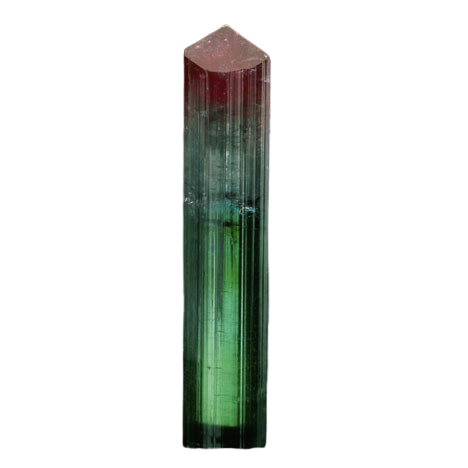



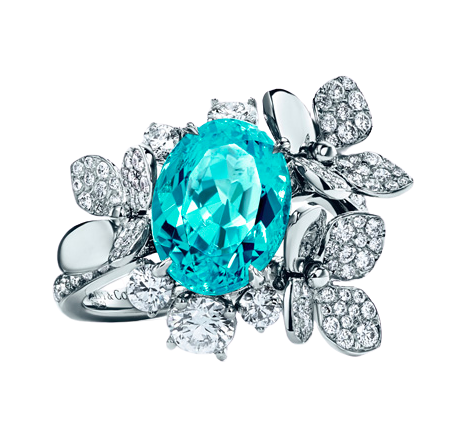

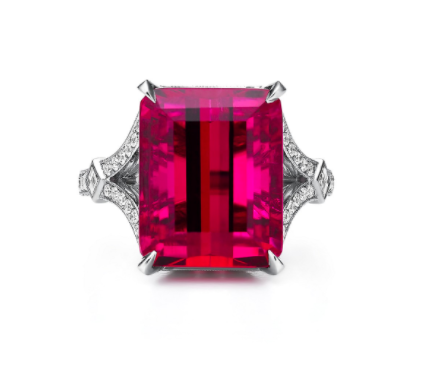

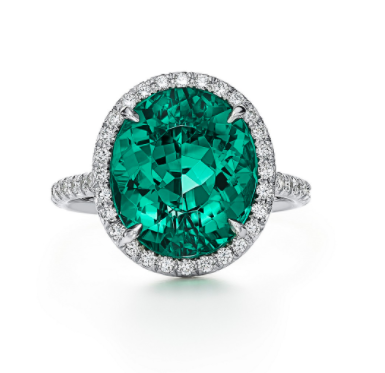

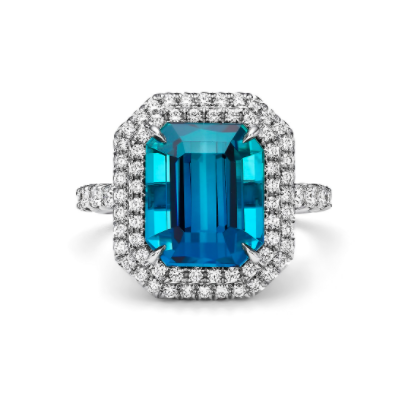



Comments